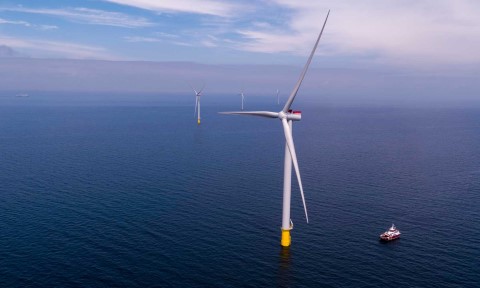Denmark plans to tender 9 GW of new offshore wind capacity to increase its offshore wind capacity fivefold by 2030.
The government and authorities are working to ensure it is quickly clarified whether offshore wind turbine projects and other renewable energy projects under the open door scheme break EU law, the ministry said.
However, in parallel to the dialogue with the EU Commission, Danish Minister for Climate, Energy and Utilities Lars Aagaard has announced that he will start tendering 9 GW of offshore wind energy this year through state tenders.
“My ambition is that the bidding process can start in 2023, which of course assumes that the process with the conciliation circle allows for the ambitious timetable,” Minister Aagaard said.
New capacity to be operational by 2030
The 9 GW offshore wind turbines will be able to produce green electricity equivalent to covering the annual electricity consumption of more than nine million Danish and European households. Power can also go to Danish PtX projects.
”We must have a quick clarification on the open house applications, and that is our main priority here and now. The situation is unsustainable for the actors and therefore there is a dialogue with the EU Commission at all levels. But on top of that, we also need to look at what we can do to increase the expansion of offshore wind through government tenders,” Aagaard said.
“That is why I will call negotiations next month on the framework for us to start bidding for the construction of 9 GW of offshore wind this year. It can increase our offshore wind capacity five times, and the ambition is to have the turbines up and running by 2030 at the latest.”
The 9 GW of offshore wind originates from, among other things, the Climate Agreement on green power and heat from June 2022 and was concluded by a large majority in the Danish Parliament before the general election. These are offshore wind turbine projects that must be submitted to government tenders, and therefore have nothing to do with the projects that have been submitted under the open door scheme.
The 9 GW capacity that the government will start tendering this year includes, among others, Bornholm Energy Island, Hesselø, and other 5 GW offshore wind projects.
”Overplant” and go beyond 9 GW
The ministry said the Danish government is currently looking at how to give developers of offshore wind projects through state tenders greater freedom to install more offshore wind power at tendered offshore locations than has been agreed so far in the climate agreement and other policies. agreements. This “overplanting” option could potentially increase capacity considerably above 9 GW, the ministry said.
“The government will spend the next few weeks leading up to negotiations investigating whether we should give installers more freedom to build as much offshore wind as possible in the areas we have already designated. This could potentially mean that there will be significantly more offshore wind than the agreed 9 GW,” Aagaard said.
The locations selected for government tenders do not overlap with the areas to which market players have requested access under the open door scheme.
“In addition to negotiating the 9 GW of offshore wind, we also have to decide in the spring how the energy island in the North Sea will be tendered. So while I am well aware that the situation with open door applications in the here and now creates uncertainty for stakeholders, the signal from this is that the government is focused on securing more new offshore wind as soon as possible,” Aagaard said.


